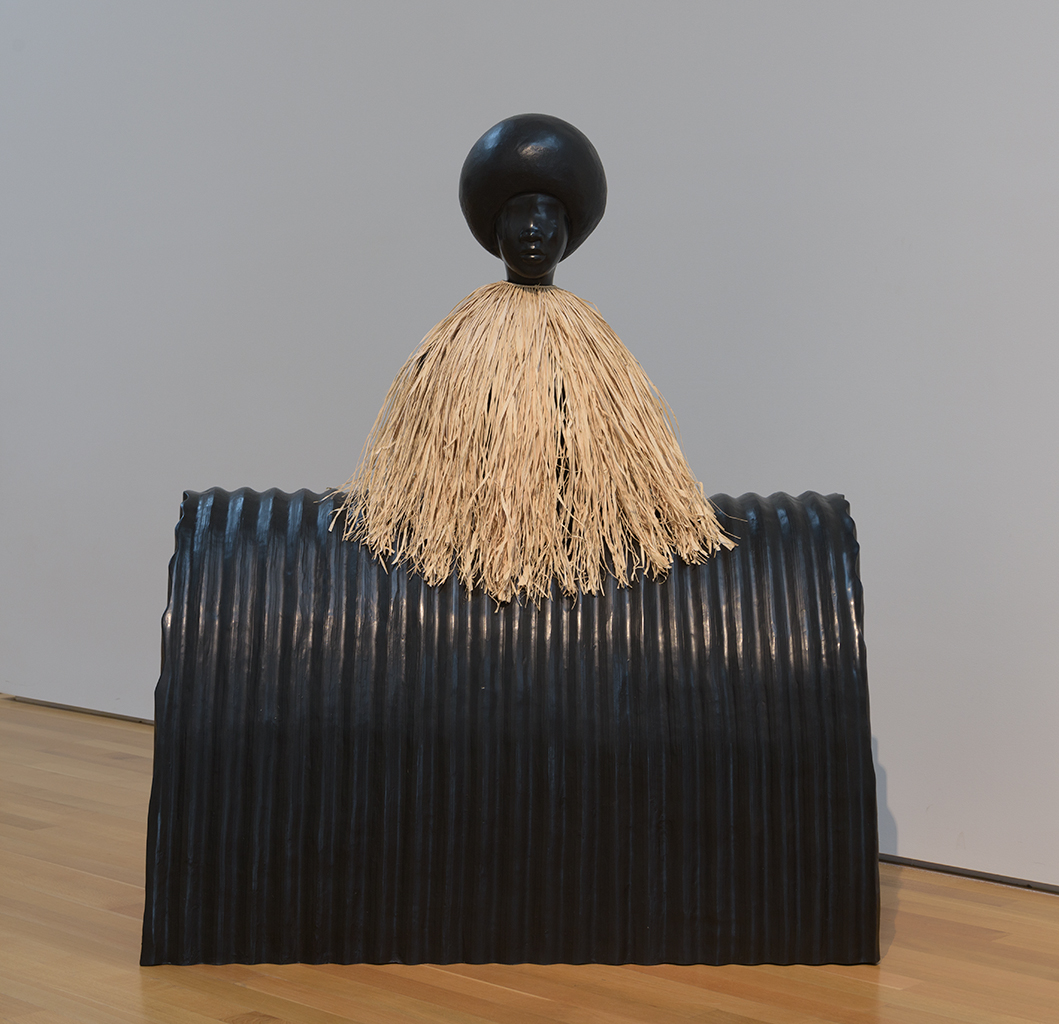
Corrugated (2019), created by Simone Leigh, is a bronze sculpture of a black figure wearing dried brown leaves, located at a massive podium and presented in the North Carolina Museum of Art. The composition draws attention as the rafia clothing develops a solid association with indigenous African tribes and traditions, and the head’s size is significantly smaller than a ridged base. The first glance at Simone Leigh’s work makes a viewer notice the skirt and the contrasting size; however, a more detailed observation reveals different design elements that contribute to the artist’s message expressed through the sculpture (Leigh). Indeed, the eyeless face, massive representation of a haircut or hat, ribbed podium, and brief bronze ornaments address the piece’s balance, contrast, and emphasis. This paper aims to describe how the elements and principles of art have been combined to create the overall impression of Leigh’s sculpture Corrugated.
Sculptors’ craft is an unusual representation of their thoughts and expression of specific topics worth their audience’s attention. Leigh used two ancient materials in the artwork: bronze and rafia. Their combination looks balanced and appropriate for representing African culture. The artist emphasized the leaves-made skirt to inform the audience that the sculpture addresses indigenous traditions. The scale of the artwork is played around with looking like a caricature as the shape of the figure is minimized by the size of the outfit it is wearing. The podium it sits on is also proportionally bigger than the figure itself, but this helps create a balance between the material as it is also potentially large. The sculpture’s scale is rather caricaturing because the body is minimized by the clothing and platform, the largest part of the artwork. Thus, the shape is a central element of art in Corrugated, as the perception of the statue is based on how it is shaped because it draws attention at first glance.
Another element, color, addresses the common association between black skin and African culture, and the contrast of rafia clothing adds contrast to the composition. The artist suppressed the figure’s eyes, a crucial part of the human body through which characteristics and moods might be identified. According to design principles, the emphasis on the eyeless face addresses the author’s willingness to represent a group or a tribe rather than drawing attention to one’s personality. Soft shapes of the face and head decoration suggest that the sculpture is female, and the skirt enforces the association. The combination of dark shades of bronze, rafia, and face make an impression that the artist honors indigenous African culture.
The sculpture has a unique pattern of corrugated lines on the podium and a cone-shaped outfit with a circular head on the top. Although the artwork does not look harmonious, its rhythm can be identified as a sphere sliding down to a line on its skirt in curvature and extending down to the straight lines of the podium. The structure used by the artists suggests that the figure is symmetrically balanced from right to left. Furthermore, the unity of composition is achieved through color and the lines flowing in the same direction. Variety, an essential principle of design, is portrayed by the artist as the difference between the heaviness of bronze and the lightness of the rafia, emphasizing the latter as a central part of the artwork.
Corrugated is an example of artwork where the central element is highlighted by the material selection and the contrasting materials. The size differences between the figure and its podium add aspects of the caricature to the sculpture, and the absence of eyes makes a viewer perceive the work as a collective image of a tribe. The artwork develops strong associations with African traditions through the unusual use of design principles such as unity, balance, and proportion. Color selection, various shapes, and non-standard forms are the art elements through which the artist explores the perception of indigenous culture.
Work Cited
Leigh, Simone. Corrugated.The North Carolina Museum of Art, 2019.